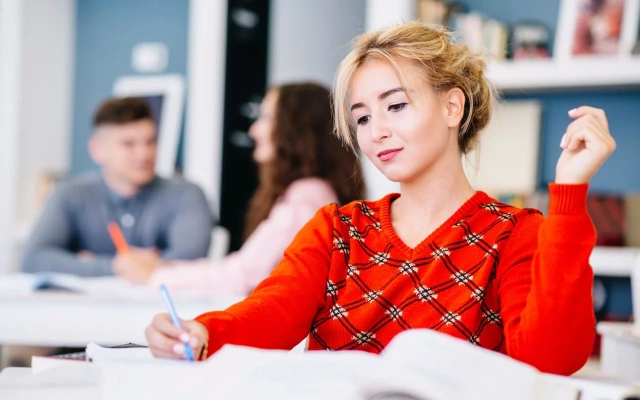-
Content:
- What is SPO?
- Specialties
- Where to get
- Program
What is SPO?
SPO is secondary vocational education. Its goal is to train skilled workers and mid-level specialists for all sectors of the economy [1] . You can enroll in SPO programs not only after the ninth or 11th grade, but also after graduating from college or university.
The education is focused on practical skills. Employers often enter into agreements with colleges, provide students with internships in order to develop their own personnel.
In 2023 alone, 1.2 million people entered secondary vocational education programs [2] . About 45% of all personnel in the labor market are graduates of technical schools and colleges [3] .
Secondary specialized education and secondary vocational education
In the USSR, primary vocational education was obtained in vocational schools, and secondary specialized education was obtained in technical schools [4] . In Russia, such a division does not exist; only secondary vocational education is enshrined in federal law. It can be acquired in a college, a school, or a technical school.
Specialties of secondary vocational education
The specialties of secondary vocational education are approved by the Ministry of Education and Science of Russia. You can choose from several dozen professions [5] . Here are some of the areas:
- Medicine – nurse, paramedic, dental technician, pharmacist, massage therapist.
- Education : kindergarten teacher, primary school teacher.
- Jurisprudence – lawyer, specialist in judicial administration.
- IT technologies – programmer, database administrator, application developer.
- Aviation – technician, pilot, dispatcher.
- Economics and management – accountant, financier, insurance specialist.
- Service and tourism – fashion designer, make-up artist, florist, chef, pastry chef.
- Art – ballet dancer, actor, music teacher, choir conductor.
In 2023, the most popular specialties among college students were “Information Systems and Programming”, “Nursing”, and “Primary School Teaching” [6] .
Economics of Education
Can the SPO system solve the problem of personnel shortage?
Where to get secondary vocational education
There are SPO programs in 3.5 thousand educational institutions [7] . These are colleges, technical schools and vocational schools. The curricula, admission rules and set of documents do not differ much. No later than March 1 of each year, SPO organizations publish admission rules, specialties and forms of study, a list of required exams on their websites. By June 1, information on the number of budget and commercial places is published.
Applications for admission begin in June and last almost until the end of August. If there are vacancies, technical schools, colleges and vocational schools may extend admission until the end of autumn. Training can be conducted on a budgetary or contractual basis.
Applicants must have basic general, secondary general, primary vocational, secondary vocational or higher education. The available specialty and the duration of study will depend on this: from 2 years 10 months to 3 years 10 months.
To apply, you will need a package of documents:
- certificate;
- application for admission;
- copy of passport;
- certificate of health status in form No. 086-U;
- photographs for personal files;
- military ID for young men over 18 years old.
When applying, the admissions committee takes into account not the results of the OGE or the USE, but the average grade point average of the certificate. However, for some specialties, the educational institution may conduct additional entrance examinations. With their help, the necessary creative, physical or psychological qualities are assessed. For example, applicants to the program “Garden and Park and Landscape Construction” will need to pass an exam in drawing [8] .
Economics of Education
How full-time and part-time education is organized in schools, colleges and universities
SPO program: how the training is conducted
Studying at a college or technical school is more like studying at a university than at school:
the year is divided into two semesters, after each one you need to take tests and exams;
classes are held in pairs – one lasts 90 minutes;
The theory is given with notes during lectures, and during seminars, practice and discussion of the material are carried out.
The first years have general education subjects: mathematics, Russian, English, history. Then students study applied subjects – what will be useful at work.
Throughout the final year, students write and defend their diploma thesis, the topics are always practical.


